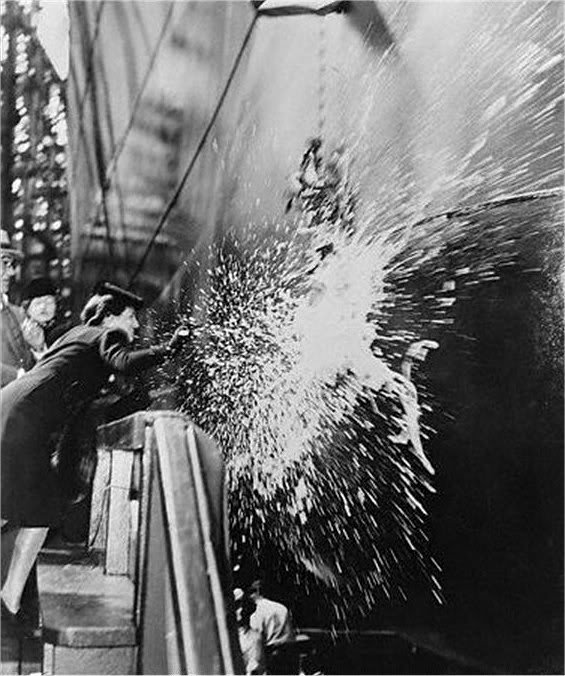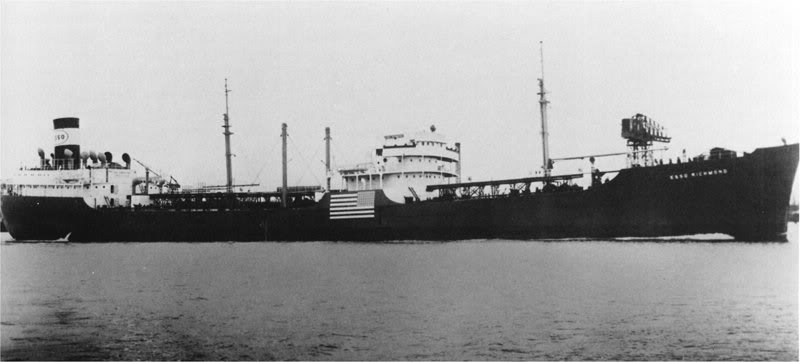Auke Visser's International Esso Tankers site | home
T.S.S. ESSO RICHMOND (1)
From a Newport News Shipbuilding publication
T.S.S. ESSO RICHMOND (1)
Hull No: 370
Owner Standard Oil of NJ
Launched: September 29,1939
Delivered: April 20.1940
Dimensions: 553 x 75 x 39 ft.
Gross Tonnage: 11.316
Displacement: 23.359 tons
Machinery: Geared turbines. 4 Boilers, Twin Screw
Horsepower/Speed: 13.500/18 knots
Fate: Scrapped. 1970
|

Rose Kennedy Breaking Bottle on Ship
Mrs. Joseph P. Kennedy, wife of the U.S. Ambassador to England, smashes a bottle of champagne against the 553 foot tanker
"Esso Richmond (1)," which was launched at the Newport News Ship Building & Dry Dock Company, on 29 September 1939.
( Photo by Rose Elizabeth Fitzgerald Kennedy )
On January 3 1938, the shipyard signed a contract with the Standard Oil Co. of NJ for the construction of three large, fast, twin screw tankers, which were identical to nine others ordered simultaneoulsy from other shipyards. These turbine-driven ships of 16,300 DWT were designed with national defense features and all three of the Newport News-built ships soon saw military service.
The keel for the first ship was laid in Shipway 9 on January 16. 1939, and she was named ESSO RICHMOND and was christened by Mrs. Joseph P. Kennedy on the following September 29. Attending Mrs. Kennedy at the ceremony were her fa-ther and mother and her daughter Eunice, who served as maid of honor.
After trials on April 18-19, ESSO RICHMOND was delivered to her owners and left the shipyard on April 20. She operated with the Esso fleet only until October, then was sold to the Maritime Commission, acquired by the Navy. and was renamed KASKASKIA and designated AO-27. She was armed with two 5" guns and two 3"guns and was provided with a naval com-plement of 272 men. KASKASKIA carried fuels between West Coast ports and Hawaii. Alaska, and Pacific Islands during the war. She steamed proudly into Tokyo Bay on September 10, 1945, to join the Occupation Force.
She remained in the Far East for a year before returning to California in September 1946. She continued in Naval service in the Pacific and during the Korean War operated out of Sasebo, Japan. KASKASKIA made three deployments to Korea, winning seven battle stars to add to the nine which she had won in World War II service.
She was placed out of commission in April 1955, reentered service with MSTS in January 1957, was decommissioned in December 1957, then was recommissioned in December 1961 due to the Berlin Crisis. She served along the East Coast and with the Sixth Fleet in the Mediterranean into the 1960s and participated in several space recoveries during the period. The old KASKASKIA was finally stricken from the Navy List on December 19,1969 and was sold for scrap in 1970.
|
